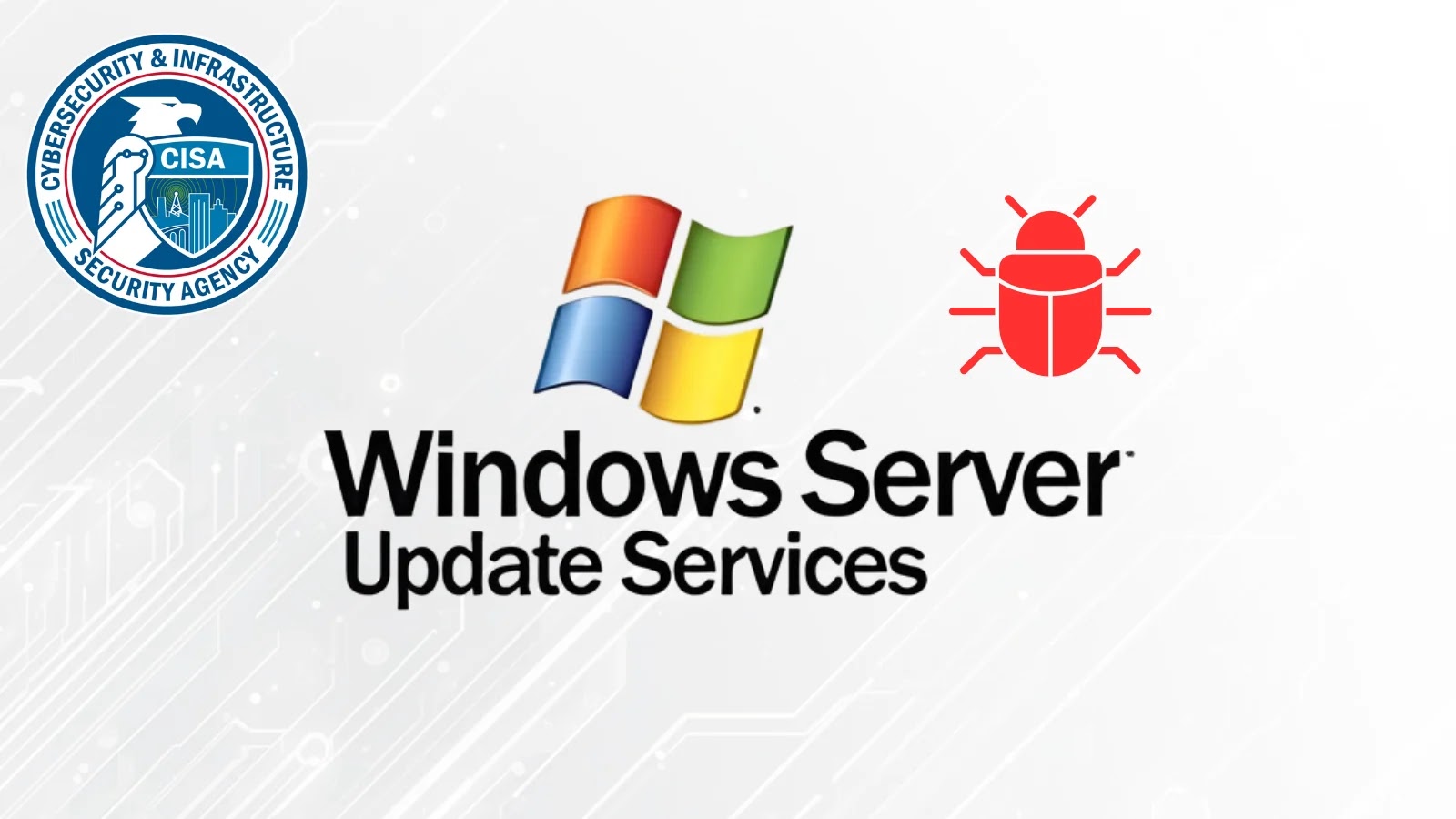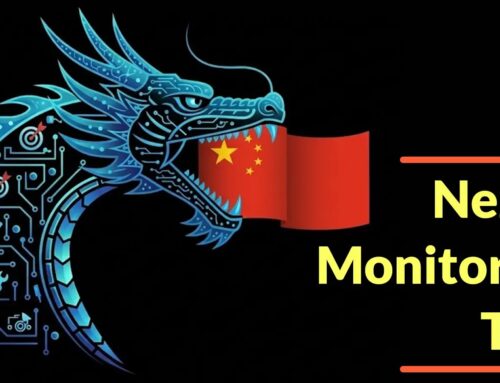
CISA Shares New Threat Detections for Actively Exploited WSUS Vulnerability
Organizations worldwide face a relentless barrage of cyber threats, and staying ahead of sophisticated attackers requires constant vigilance and actionable intelligence. In a critical move to bolster enterprise defenses, the Cybersecurity and Infrastructure Security Agency (CISA) recently issued fresh guidance, providing essential threat detections specifically targeting an actively exploited vulnerability within Microsoft’s Windows Server Update Services (WSUS).
This update, delivered on October 29, 2025, serves as a crucial resource for IT professionals and security analysts navigating the complexities of their infrastructure. The vulnerability in question, identified as CVE-2025-59287, carries a severe CVSS score of 9.8, underscoring its significant potential for disruption and compromise. Understanding the nature of this threat and promptly implementing the recommended mitigations is paramount for safeguarding organizational systems.
Understanding the WSUS Vulnerability: CVE-2025-59287
The CVE-2025-59287 flaw represents a critical remote code execution (RCE) vulnerability present in Microsoft’s Windows Server Update Services (WSUS). WSUS is a fundamental component for many organizations, enabling administrators to manage and distribute updates for Microsoft products to computers in a network. This centralized update management is vital for maintaining security and stability, but a vulnerability within it can have far-reaching consequences.
A remote code execution vulnerability means an attacker can execute arbitrary code on a vulnerable system from a remote location, often without authentication. In the context of WSUS, this could allow adversaries to:
- Take full control of the WSUS server.
- Propagate malware or ransomware throughout the network via legitimate update mechanisms.
- Establish persistence within the network.
- Exfiltrate sensitive data.
The CVSS score of 9.8 highlights the ease of exploitation and the severe impact this vulnerability can have on confidentiality, integrity, and availability. Active exploitation further emphasizes the urgency for organizations to address this issue immediately.
CISA’s New Threat Detections: Enhancing Defensive Capabilities
CISA’s latest guidance focuses on providing organizations with enhanced methods for detecting the malicious activity associated with the exploitation of CVE-2025-59287. These detections are crucial for identifying if an attacker has already leveraged the vulnerability, and for monitoring ongoing attempts. While the full details of CISA’s specific rules and signatures are typically disseminated through official channels and security information platforms, the core principles involve looking for:
- Unusual Network Traffic: Monitoring for atypical connections to or from WSUS servers, especially those originating from unexpected external sources or showing anomalous internal patterns.
- Process Anomalies: Detecting unexpected processes running on WSUS servers, particularly those launched with elevated privileges or exhibiting suspicious behavior.
- File System Modifications: Identifying unauthorized file creations, modifications, or deletions on the WSUS server, which could indicate the deployment of malicious payloads.
- Log Entry Review: Scrutinizing WSUS and Windows event logs for error messages, access attempts, or other indicators that deviate from normal operations, potentially signaling successful exploitation or reconnaissance efforts.
- Compromised Credentials: Monitoring for suspicious login attempts or unusual activity from service accounts associated with WSUS.
Organizations should integrate these detection strategies into their Security Information and Event Management (SIEM) systems and Endpoint Detection and Response (EDR) solutions to gain comprehensive visibility.
Remediation Actions and Proactive Defense
Addressing CVE-2025-59287 requires a multi-pronged approach encompassing immediate remediation and proactive security measures. Given its active exploitation, prompt action is non-negotiable.
Immediate Remediation
- Patching: The most critical step is to apply all available security updates and patches from Microsoft that address CVE-2025-59287. Ensure your WSUS servers are running the latest patched versions.
- Network Segmentation: Isolate WSUS servers on dedicated network segments to limit lateral movement in case of compromise.
- Strong Authentication: Enforce strong, multi-factor authentication (MFA) for all administrative interfaces accessing WSUS.
- Principle of Least Privilege: Ensure that WSUS service accounts and administrators operate with the absolute minimum privileges required to perform their functions.
- Review Logs: Conduct thorough audits of WSUS server logs for any indicators of compromise (IOCs) matching CISA’s new threat detections.
Proactive Security Measures
- Regular Vulnerability Scans: Implement a robust vulnerability management program that includes regular scans of all servers, including WSUS instances, to identify and address weaknesses proactively.
- Managed Update Processes: While WSUS itself is for updates, ensure your update management process for WSUS is secure, including testing patches in a staging environment before widespread deployment.
- Intrusion Detection/Prevention Systems (IDPS): Deploy and configure IDPS solutions to monitor network traffic for signatures associated with known exploitation attempts against WSUS.
- Endpoint Detection and Response (EDR): Utilize EDR solutions on WSUS servers to detect and respond to suspicious activities at the endpoint level.
- Backup and Recovery: Maintain regular, tested backups of your WSUS server configurations and data to facilitate rapid recovery in the event of a successful attack.
Relevant Tools for Detection and Mitigation
Leveraging the right tools is essential for effectively detecting and mitigating the WSUS vulnerability.
| Tool Name | Purpose | Link |
|---|---|---|
| Microsoft Defender for Endpoint | Endpoint Detection and Response (EDR) and threat hunting | Microsoft Defender for Endpoint |
| Tenable Nessus | Vulnerability scanning and assessment | Tenable Nessus |
| Splunk Enterprise Security | SIEM for log aggregation, analysis, and threat detection | Splunk Enterprise Security |
| Snort/Suricata | Network Intrusion Detection/Prevention Systems | Snort / Suricata |
| Windows Event Viewer | Native Windows tool for reviewing system and security logs | Windows Event Viewer |
Key Takeaways for Organizational Security
The CISA alert regarding the actively exploited CVE-2025-59287 in WSUS underscores a critical need for organizations to prioritize their update infrastructure security. A remote code execution flaw with a CVSS score of 9.8 places it among the most severe threats. Organizations must act swiftly to implement CISA’s recommended threat detections and remedial actions, including immediate patching, robust network segmentation, and diligent log monitoring.
Beyond immediate remediation, cultivating a proactive security posture—featuring regular vulnerability assessments, strong authentication, and continuous threat monitoring—is fundamental. By integrating these strategies, enterprises can significantly reduce their attack surface and enhance their resilience against sophisticated cyber adversaries actively targeting critical components like WSUS.





